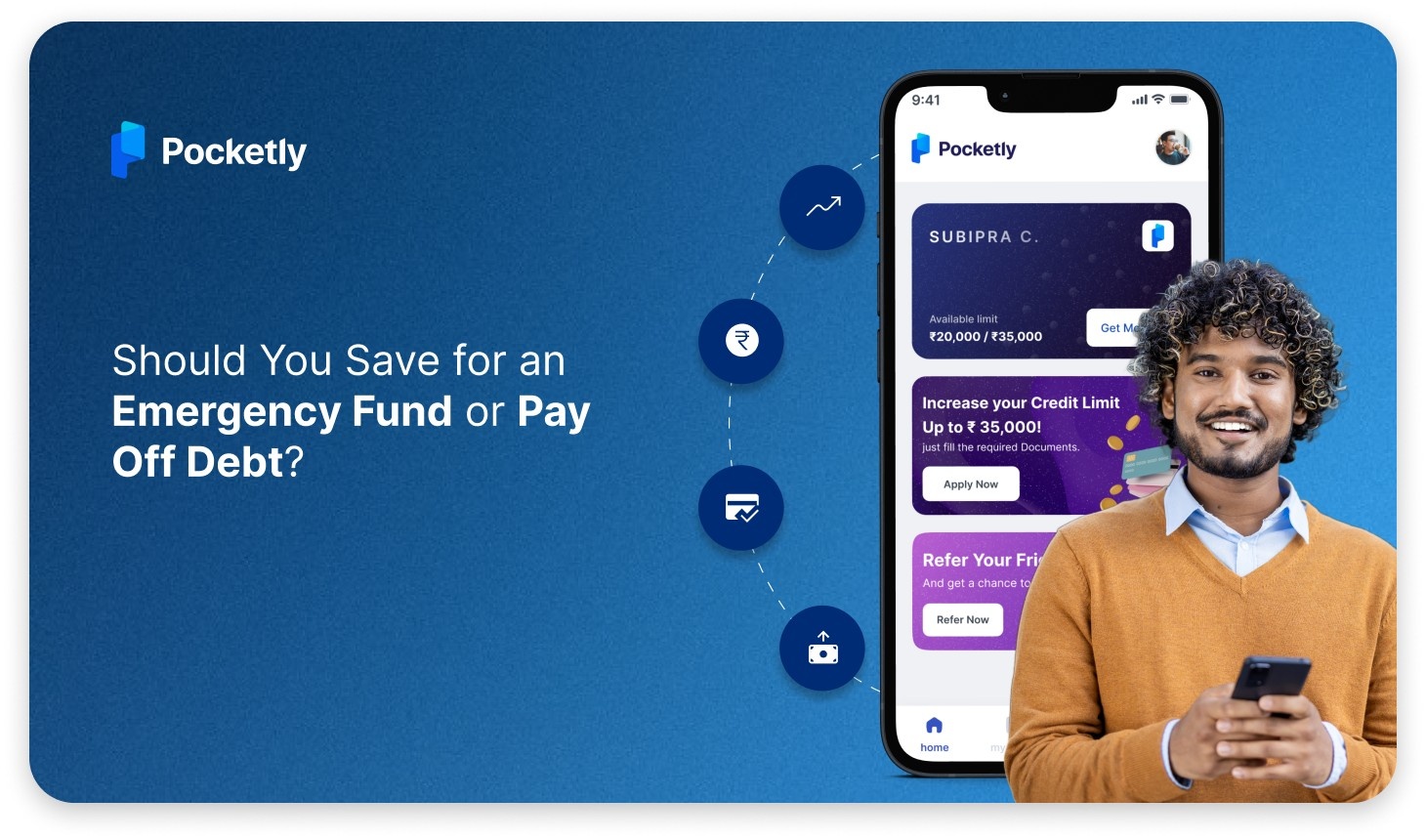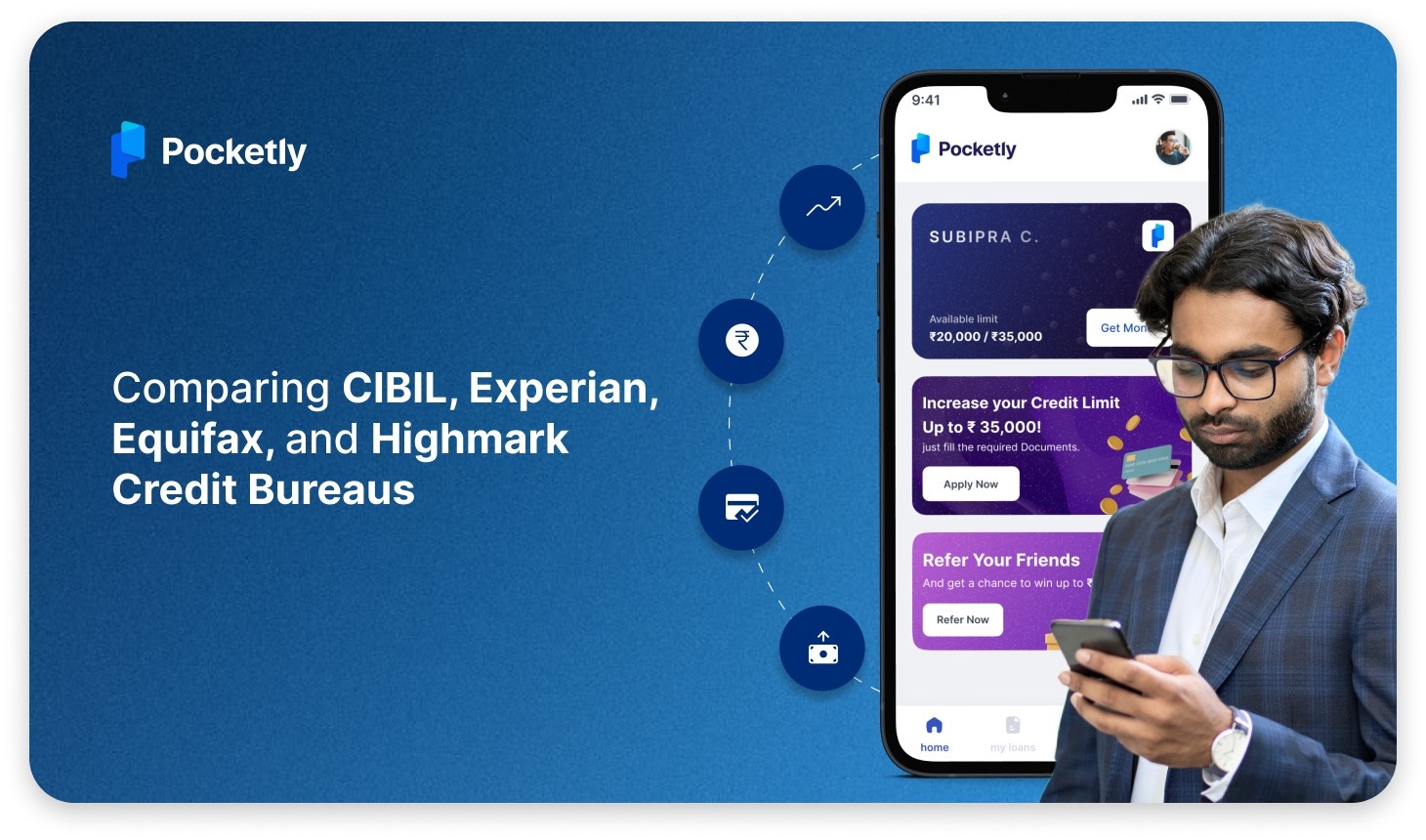
When it comes to managing your finances, your Credit Information Report plays a crucial role in determining your creditworthiness.
Picture this: You’re all set to apply for a loan, maybe to buy that dream bike or to fund your higher education. But just as you're about to hit "submit," you realize there's something in your Credit Information Report that could stand in your way—terms like DBT, STD, LSS, and DPD. What do they even mean? And how could they impact your chances of getting that loan?
If you’ve ever felt lost reading your credit report, you’re not alone. Understanding these terms is very vital because they directly affect your creditworthiness and the likelihood of securing loans in the future.
But don't worry—we’re here to break it down for you in a way that’s easy to understand, so you can jot down your financial journey with confidence. Let's dive in!
What is a Credit Information Report (CIR)?
Think of a Credit Information Report (CIR) as your financial report card. It’s what lenders check when deciding whether to approve your loan or credit card application. Since this report plays a big role in those decisions, keeping an eye on it is super important to ensure everything is accurate and up-to-date. Any errors in your CIR could hurt your credit score, so regular monitoring is key.
Your CIR is a summary of your credit history, combining data from India’s four major credit bureaus—Experian, TransUnion CIBIL, Equifax, and CRIF High Mark. These bureaus track your loans and credit behavior to help lenders assess your reliability.
The best part? You can get your CIR for free! Just visit the CIBIL website and use the free CIBIL Score Generator or ask for it at your bank branch when you’re applying for a loan. Make sure you have your documents ready to go.
Once you have your CIR, it might look a bit overwhelming at first. But don’t worry! Let’s break down the key sections so it’s easier to understand.
How to Read Your Credit Information Report
Your CIR is divided into several important sections:
- CIBIL Score:
Right at the top, you’ll see your CIBIL score, ranging from 300 to 900. The higher, the better! If you see "NA" or "NH," it means there’s no credit history or it’s been inactive for a while.
- Personal Information:
This section lists your basic details like your name, date of birth, and ID numbers (PAN, passport, Aadhaar, etc.).
- Contact Information:
Here, you’ll find your addresses, phone numbers, and email addresses—up to four addresses can be listed.
- Employment Information:
This part covers your job and income details as reported by your lender when you opened a credit account.
- Account Information:
The heart of the report! It includes all your loans and credit cards, with details on lenders, account numbers, loan amounts, balances, and a 36-month payment record. Pay special attention to the DPD (Days Past Due) section— "000" or "STD" means you’re on track, while terms like "SUB," "DBT," or "LSS" signal overdue payments.
- RedBox:
If there’s a dispute related to any account, you’ll see a red box. It’ll disappear once the issue is resolved, whether or not any changes were made.
- Enquiry Information:
This section shows any recent credit inquiries made by lenders, with details like the lender’s name, the date of the application, and the loan type and amount.
So now that we know what a CIR is, let’s move on to understanding some key terms you’ll encounter in your report: DBT, STD, LSS, and DPD.
What does DBT, STD, LSS & DPD mean?
Your CIBIL report is like a report card for your financial health, and understanding the key indicators—DBT, STD, LSS, and DPD—can help you keep your credit in check. Let’s break these down in a simple, easy-to-understand way:
Below states are the abbreviated asset classifications under DPD for availed loans or credit cards:
| Common terms | Abbreviations |
| Standard Status | STD |
| Loan Settled Loss | LSS |
| Doubtful status | DBT |
| Days Past Due | DPD |
1. DBT (Doubtful Status)
Imagine your account has been struggling with overdue payments for over a year. When this happens, your account gets tagged as "doubtful" in the DBT category. This is a big red flag for lenders because it signals that you’ve had trouble keeping up with your payments for a long time. If your account is in this status, lenders may be hesitant to approve any new loans for you.
2. STD (Standard Status)
This is where you want to be! STD means "standard," and it indicates that you’ve been making your payments on time. It’s a positive mark on your credit report, showing lenders that you’re reliable and manage your finances well.
3. LSS (Loan Settled Short)
Sometimes, due to financial difficulties, you might settle a loan for less than the full amount owed. When this happens, it’s recorded as LSS, or "Loan Settled Short." While this helps clear your debt, it can negatively impact your credit score because it shows that you didn’t repay the full amount.
4. DPD (Days Past Due)
This is a measure of how late your payments have been. If you’ve missed a payment, the number of days it’s overdue will be listed here. For example, if you see "30" in your DPD section, it means you’re 30 days late on a payment. Keeping this number low (ideally at zero) is crucial because frequent late payments can seriously hurt your credit score.
Understanding DPD Values in Your CIBIL Report
The DPD (Days Past Due) section of your CIBIL report is like a timeline that tracks how well you’ve been keeping up with your loan payments. Each
number in this section tells a story about your payment habits.
Let’s break down what these values mean:
1. 000: No Available Credit History or All Debts Paid
A DPD (Days Past Due) value of "000" indicates that there is either no available credit history for that period or that all your debts have been paid on time. This value is ideal, reflecting a solid payment history and demonstrating responsible financial management.
Consistently maintaining a "000" value can positively impact your credit score and enhance your credibility with lenders. It shows that you are a reliable borrower who meets financial obligations promptly.
2. 30/60/90
These numbers show how many days late you are on a payment. For example, if you see "30," it means you’re 30 days overdue on your EMI. The higher the number, the more overdue the payment is, which can negatively impact your credit score. Regularly seeing these numbers in your report can signal financial instability to lenders.
3. XXX
If you see "XXX" in your DPD section, it means there’s insufficient data. This usually happens when your creditor hasn’t reported your payment information for that period. While it doesn’t directly hurt your credit score, it leaves a gap in your payment history, which lenders might find concerning.
Now, let's dive into why the RBI Asset Classification Guidelines are so important and how they play a vital role in safeguarding the financial system.
RBI Asset Classification Guidelines
The Reserve Bank of India (RBI) has specific guidelines for classifying loans based on how well payments are being managed. These classifications help determine the health of your credit account and guide lenders in their decisions.
Here’s a quick rundown of what each classification means:
1. STD (Standard)
This is the gold standard. If your account is classified as STD, it means you’re making your payments on time, and everything is in good standing. Lenders see this as a positive sign that you’re managing your debt responsibly.
2. SUB (Sub-standard)
If your payments are overdue by more than 90 days, your account moves into the SUB category. This is a warning sign that you’re falling behind, and it could start to affect your credit score negatively.
3. DBT (Doubtful)
If your account remains in the SUB category for over 12 months, it’s classified as DBT, or "doubtful." This indicates a prolonged period of financial trouble, making lenders very cautious about extending further credit to you.
4. LSS (Loss)
This is the most severe classification. An account labeled as LSS indicates that the loan is considered a loss by the lender, and recovery of the full amount is unlikely. This status has a significant negative impact on your credit report, making it very difficult to secure new loans or credit.
Detailed Explanation of DBT
When your account reaches DBT status, it means you’ve been in financial trouble for quite some time—specifically, your account has been stuck in the SUB category for over 12 months. This prolonged period of missed payments signals to lenders that you’re at a high risk of defaulting on your loans.
1. Impact on Loan Approval:
- Lender Caution: With a DBT status, lenders are generally advised to deny any further loans. This is because your account’s history shows a consistent inability to meet payment deadlines, making you a high-risk borrower.
2. Long-Term Implications on Creditworthiness:
- Credit Score Damage: A DBT status significantly lowers your credit score, which can take years to rebuild.
- Future Loan Challenges: Even after you’ve resolved the issue, getting approved for future loans becomes much more difficult. Lenders will see your DBT history and may be reluctant to offer you credit, or they might offer it at much higher interest rates.
Significance of STD and LSS in CIBIL Reports
Understanding the significance of STD and LSS statuses in your CIBIL report can help you better manage your credit and avoid potential pitfalls:
1. STD (Standard)
Being in the STD category is a good sign. It indicates that you’re making your payments on time, which boosts your credit score and makes you a more attractive candidate for loans. Lenders view this status as a sign of positive credit behavior, increasing your chances of loan approval.
2. LSS (Loan Settled Short)
When you settle a loan for less than the full amount owed, it’s recorded as LSS in your report. This reflects financial distress and can harm your credit score. While it might resolve immediate financial pressure, it signals to lenders that you weren’t able to pay off your debt in full, which can make them wary of lending to you in the future.
Impact of DPD on Credit Score and Loan Applications
Let’s talk about DPD—Days Past Due. This little number can have a big impact on your credit score and your ability to get loans.
Here’s why it’s so important:
1. Loan Rejections Due to High DPD Values
If you’ve missed payments and have high DPD values, it’s a red flag for lenders. They see those late payments and start thinking, “Can this person really keep up with their payments?” This often leads to loan rejections because lenders don’t want to take the risk. Keeping your DPD low—or better yet, at zero—is crucial if you want to improve your chances of getting that loan or credit card you’re after.
2. Inability to Modify DPD Information
Here’s the thing about DPD: once it’s recorded, it’s there for good. You can’t go back and change it, even if you’ve managed to get back on track with your payments. This is why it’s so important to stay on top of your EMIs. Even one late payment can stick with you for a long time and make future borrowing more difficult.
3. Importance of Maintaining Consistent On-Time Payments
The best way to keep your credit score healthy and avoid loan rejections is simple: pay on time, every time. Consistent on-time payments show lenders that you’re reliable and can manage your finances responsibly. This not only helps you avoid high DPD values but also boosts your credit score, making it easier to get loans with better interest rates in the future.
Pro tip: Keeping your DPD low by making timely payments is one of the smartest moves you can make for your financial health. It opens doors to more borrowing opportunities and keeps your credit score in good shape.
Format of DPD and STD in CIBIL Reports
Your CIBIL report is like a report card for your credit behavior, and understanding how DPD and STD are formatted can help you keep track of your financial health.
Here’s what you need to know:
1. DPD: Month-on-Month Format Showing Late Payments
In your CIBIL report, the DPD (Days Past Due) section tracks your payment history month by month. If you’ve missed a payment or paid late, this section will show exactly how many days you were overdue for that particular month. For example, if you see “30” under a specific month, it means you were 30 days late on your payment for that month. Keeping this section clear—meaning all “000”s—indicates that you’re up-to-date with your payments, which is great for your credit score.
2. STD: Highlights Record of Timely Payments
The STD (Standard) section is where you want to be! This part of your report highlights the months where you’ve made your payments on time. If your account is marked as STD, it’s a clear sign that you’re managing your credit responsibly. Lenders love to see a long row of “STD” entries because it shows that you’re reliable and consistent in making your payments on time.
Understanding these formats helps you keep a close eye on your credit behavior and ensures you’re on the right path to maintaining a strong credit score.
Know How to Read/Locate DPD in Your CIBIL Report
Alright, so you've got your CIBIL report in hand—great start! But figuring out where to find the DPD (Days Past Due) can feel a bit like looking for a needle in a haystack, right? Don’t worry, it's actually pretty straightforward once you know where to look.
Here’s a quick and easy guide to finding your DPD in your CIBIL report:
- Step 1: Access Your CIBIL Report
Open your CIBIL report, either online or from your downloaded file.
- Step 2: Navigate to Credit Account Details
Scroll down until you find the section that lists all your credit accounts—this includes your loans, credit cards, etc.
- Step 3: Locate the DPD Section
Look for a column or a section labeled “DPD” or “Days Past Due” next to each of your accounts.
- Step 4: Understand the Numbers
Check the numbers or codes listed under the DPD section. “000” means no payments were missed; numbers like “030” or “060” indicate late payments by 30 or 60 days.
- Step 5: Review for Accuracy
Make sure the DPD values correctly reflect your payment history. If anything looks off, it might be worth investigating further.
- Step 6: Use This Information Wisely
Your DPD is a key part of your credit health. Regularly reviewing it can help you stay on top of your credit score and avoid any surprises when applying for new credit.
Understanding your Credit Information Report and the impact of terms like DPD, STD, LSS, and DBT is crucial for maintaining a healthy financial profile. But managing these aspects can be overwhelming, especially when you’re juggling multiple responsibilities like studies, work, or other commitments. That’s where having the right tools at your fingertips can make all the difference.
If you’re a student or a young professional looking for a convenient way to manage your finances, you might be wondering if there’s an easier way to keep everything in check. This is where Pocketly comes into play. It’s not just about keeping track of your credit score—it’s about having access to quick, hassle-free loans when you need them, without getting bogged down by complicated processes or hidden fees.
What makes Pocketly different?
Pocketly stands out as the go-to app for students and young professionals who need quick, hassle-free loans. With its user-friendly interface, zero hidden fees, and flexible repayment options, Pocketly ensures you get the financial support you need, when you need it.
Here’s what makes Pocketly a top choice:
- Instant Loan Approval: Get your loan approved in minutes without any lengthy processes.
- Flexible Repayment Options: Choose a repayment plan that fits your budget, with the ability to pay off your loan early without penalties.
- No Hidden Fees: Transparent terms and conditions mean you know exactly what you're getting, with no surprise charges.
- Credit Limit Increase: Build a good repayment history and enjoy increased credit limits for future needs.
- Student-Friendly Terms: Tailored specifically for students, making it easy to manage finances while focusing on studies.
Conclusion
Your CIBIL report is more than just a document—it’s a guide to your financial future. By understanding key terms like DBT, STD, LSS, and DPD, you gain the knowledge to keep your credit behavior in check, ensuring timely payments and a strong credit score. This sets the stage for smoother loan approvals, better interest rates, and long-term financial stability.
But you don’t have to manage your credit alone. With tools like Pocketly, you can effortlessly stay on top of your finances while accessing the funds you need without the hassle.
Take control of your financial journey—download Pocketly’s instant loan app today and pave the way for a secure and prosperous future!
FAQs
What does DBT mean in a CIBIL report?
DBT stands for "Doubtful," indicating that an account has been in the sub-standard (SUB) category for more than 12 months. This status reflects prolonged financial distress and can significantly impact your creditworthiness.
How does DBT status affect my loan approval chances?
A DBT status in your CIBIL report is a red flag for lenders, often leading to loan rejections or approvals with higher interest rates. It signals that you've had difficulty making timely payments for an extended period.
Can I remove a DBT status from my CIBIL report?
Unfortunately, you cannot directly remove a DBT status from your CIBIL report. The best approach is to improve your payment behavior and manage your credit responsibly over time to gradually rebuild your credit score.
What is the difference between DBT and SUB in a CIBIL report?
SUB (Sub-standard) indicates that an account is overdue for more than 90 days, while DBT (Doubtful) means the account has remained in the SUB category for over 12 months, making it a more severe classification.
How long does a DBT status remain on my CIBIL report?
A DBT status can remain on your CIBIL report for several years, typically up to seven years, depending on the credit bureau’s reporting policies. During this time, it can negatively affect your ability to obtain new credit.














